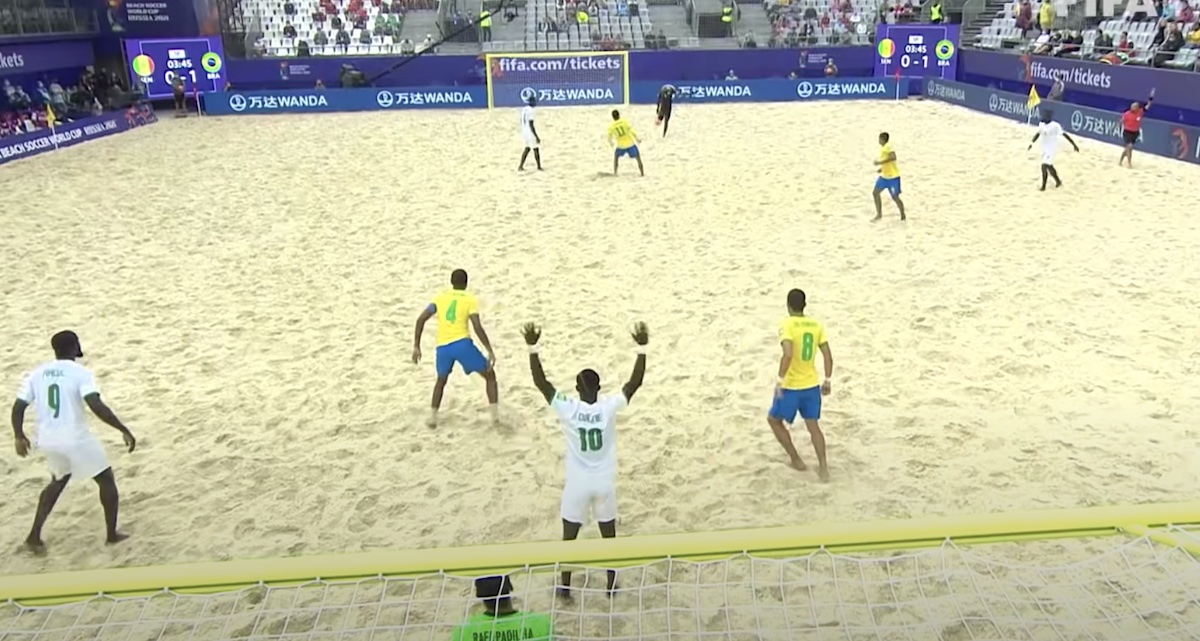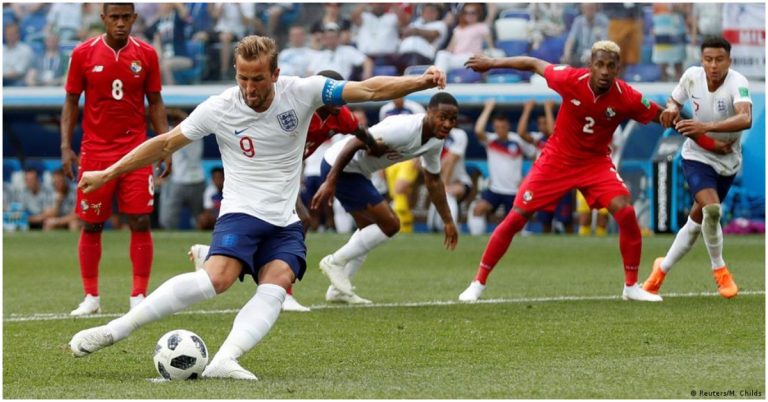What Is Beach Soccer?
The beauty of soccer is that you can play it almost anywhere.
On the concrete streets, in a sodden field or even indoors, the overall accessibility of this globally loved sport only adds to its universal popularity. To get started all you need is a ball of some kind, an appropriate space and some objects to represent goal posts.
Soccer can take place on most surfaces. Traditionally contested on grass, a game can also be played on pavement or dirt and has even evolved to more advanced settings such as Astroturf and hard court.
But did you know that soccer is played on sand?
Beach soccer or sand soccer is an increasingly popular variation of the beloved game, with established international teams, club sides and numerous leagues all over the world. Yet the notion of this game is still unfamiliar to many soccer fans in comparison to its grassy counterpart.
So what exactly is beach soccer?
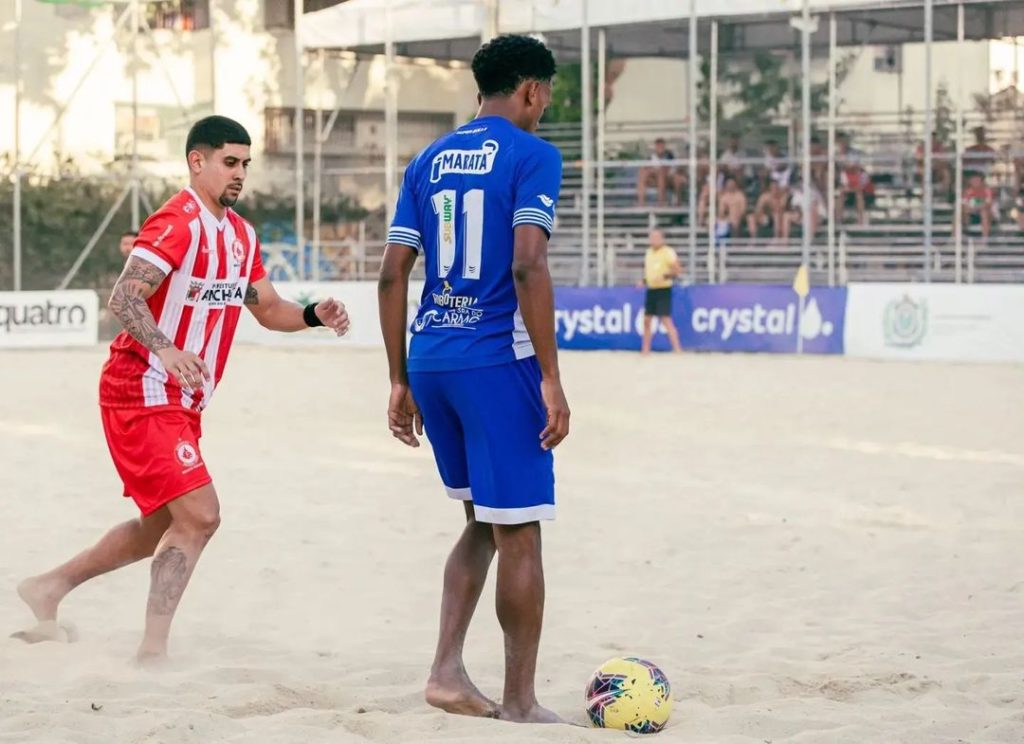
What Is Beach Soccer?
Beach soccer is actually known by a variety of different names including beach football, sand football and beasal. Whilst similar to original ‘association football’ in many ways, it is played exclusively on a surface made entirely of sand, and so inevitably has changes in regulation or adaptations to contend with.
Exactly when people began to play soccer on beaches for the first time is almost immeasurable. But the introduction of the game as a standalone sport became a way of solidifying the rules in a more controlled environment and eventually a professional setting.
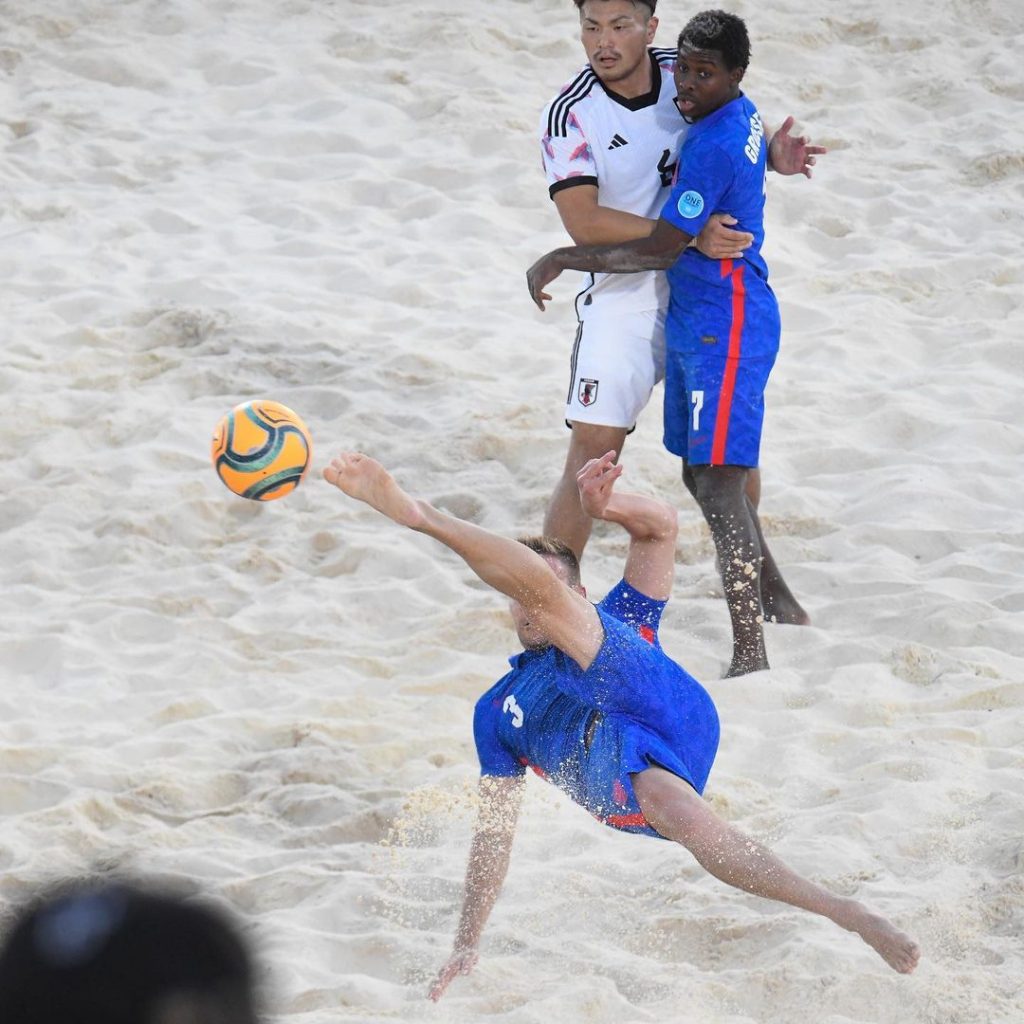
How Do You Play Beach Soccer?
Ten players can play at any one time – with two teams consisting of five members each.
Each team is allowed an additional seven players in their squad – a total of twelve players available to play during a match with unlimited rolling substitutions – meaning that players are able to leave or join the play multiple times over the course of each game.
The structure of a beach soccer game is also different to traditional soccer which has two halves lasting 45 minutes each. Instead, it consists of three periods that are only twelve minutes long each – a game is just 36 minutes in total.
There is never a ‘draw,’ whereby points are shared or spoils divided with games ending in a tie. So if a stalemate remains after the third period ends, then three minutes of extra time are played – followed by a penalty shootout if required. Penalties adhere to the same rules as grassroots soccer – with a ‘best of five’ kicks format and sudden death shots as needed.
Within its league table system, a win is worth three points whilst victory after extra time gains two points and winning on penalties sees a team receive a single point. The team that sits top of the table after all fixtures have been played are crowned champions.
Some other rules of beach soccer include:
- Players who are fouled must take the direct freekick at goal themselves unless injured
- There are no offsides
- There are no defensive walls to block freekicks
- Throw-in’s can be performed using hands or feet
How Is Beach Soccer Different?
Whilst many of the regular soccer techniques remain largely the same, there are some clear differences to how the game is played, mainly caused by a change in surface.
A ball does not easily roll on sand and so kicking it along the ground is quite difficult. It will remain in the air for longer periods of time than in a traditional soccer game.
As a result, players in particular must have strength, stamina, flexibility and be acrobatic to ensure they can manipulate the ball successfully.
Are Beach Soccer Balls Different?
Technically you can play with both a regular soccer ball or a special and more suitable beach soccer ball.
If playing with a standard soccer ball, it should be inflated to a lower pressure to both meet regulations and make it easier for players to kick when barefoot.
An official ball has more of a rubbery texture and is more lightweight so that players can keep the ball in the air for longer periods of time.
Is Beach Soccer Hard?
Yes, beach soccer is relatively hard because it’s physically very demanding.
The game is technically taxing too. It is played at an incredible fast pace and continuous precision in ball control is extremely important. There is often less time to consider your first touch or mull over the next pass.
Losing possession can be especially costly. Allowing the opponent to gain control of the ball in certain areas tends to present a goalscoring opportunity.
Is Beach Soccer Under FIFA?
The FIFA Beach Soccer World Cup is now the most prestigious professional competition in the sport and allows national sides who are registered FIFA members to compete.
Before FIFA launched the tournament in 2005, the elite competition was the World Championships, however it was replaced by the World Cup nearly two decades ago.
Do You Wear Shoes In Beach Soccer?
Footwear of any kind is not permitted in beach soccer including shoes. Players may choose to wear socks and even sport ankle guards as extra protection for their feet yet most players tend to play barefoot.
Where Is Beach Soccer Most Popular?
Beach soccer is most popular in Argentina, Brazil and Uruguay.
Although numerous other nations have grown a passion for the game as the sport has evolved, these three countries in particular have a special affiliation with the game.
The trio were primarily responsible for establishing the professional environment in which the sport is played and amongst the first national associations to help form its governing body – the BSWW.
Who Is The Best Beach Soccer Player?
Much like the Ballon d’Or in traditional soccer, the game has its own accolade to celebrate its very best players, called the Beach Soccer Stars award.
Team captains and coaches from the registered countries take part in casting a vote for the individual they believe has been the outstanding talent each year.
In the men’s game, the current holder of this award is Be Martins of Portugal with Brazil’s Adriele Rocha voted best female.
Who Is The Best Beach Soccer Team?
The world’s best beach soccer teams are determined by the BSWW World Rankings which were introduced in 2014. Since the system’s inception, Brazil have spent the largest amount of time as the elite men’s team.
The latest men’s rankings table (as of December 2022) places Portugal as the best national side on the planet and SC Braga the number one club team.
In the women’s game, Spain currently sit in top spot internationally with Terrassa the leading female club side.
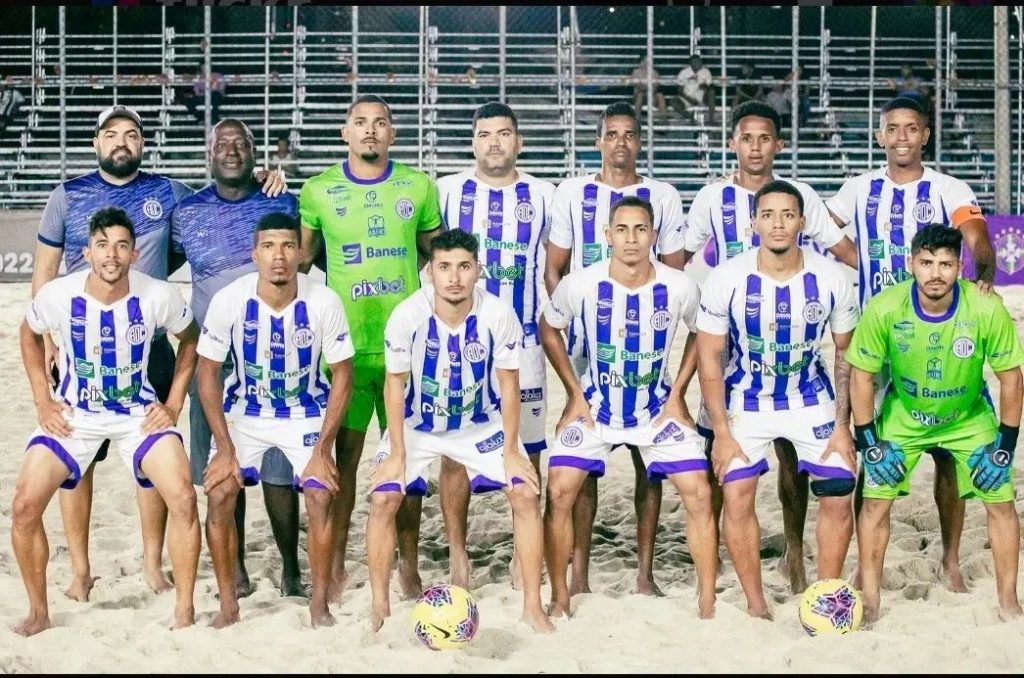

Typically it’s my passion for Sports and Music that get the typing juices flowing. But ultimately I enjoy writing or blogging about any topic I can get my keyboard thrashing hands on!

